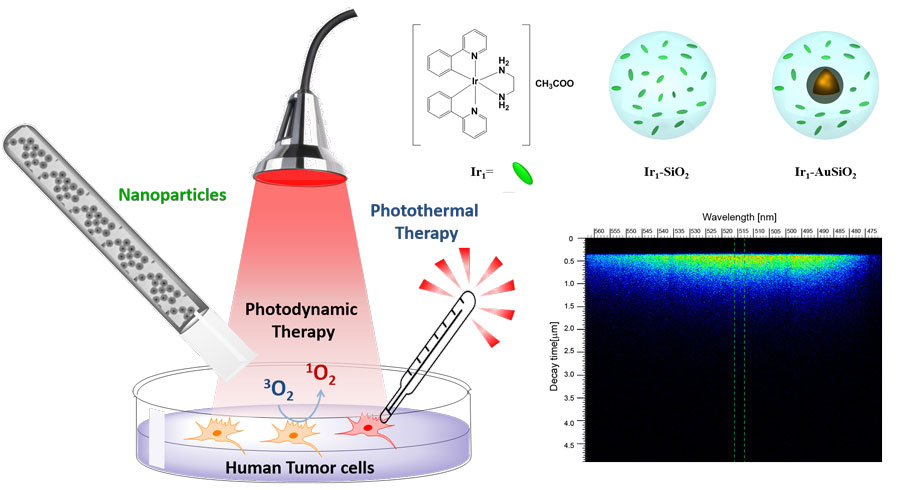L. Ricciardi, L. Sancey, G. Palermo, R. Termine, A. De Luca, E. I. Szerb, I. Aiello, M. Ghedini, G. Strangi and M. La Deda
1- CNR-NANOTEC Istituto di Nanotecnologia and Department of Physics, University of Calabria, 87036-Rende, Italy.
2-Université Grenoble Alpes, 38042 Grenoble, France
3- Department of Physics, University of Calabria, 87036 Rende, CS, Italy
4- dInstitute of Chemistry Timisoara of Romanian Academy 24, Mihai Viteazu Bvd. 300223, Timisoara, Romania
5- Department of Physics, CaseWestern Reserve University, 10600 Euclid Avenue, Cleveland, Ohio 44106, USA.
6- Fondazione Con Il Cuore and IIT Istituto Italiano di Tecnologia, Via Morego 30, 16163 Genova, Italy
7- Department of Chemistry and Chemical Technology, University of Calabria, 87036 Rende, CS
8- Department of Physics and Case Comprehensive Cancer Center, Case WesternReserve University, Cleveland, Ohio 44106, USA
Abstract
A nanoplatform for simultaneous cellular imaging, and photodynamic and photothermal therapies has been designed and realized by embedding a purposely synthesized highly luminescent water soluble iridium(III) compound into gold core–silica shell nanoparticles. These multifunctionalities arise mainly from the photophysical properties of the cyclometalated complex: (i) the heavy atom promotes, through excited triplet state formation, energy transfer processes towards molecular oxygen, with the generation of 1O2 (photodynamic effect); (ii) the overlap of the iridium(III) complex emission band with the plasmonic resonance of gold nanostructures allows excitation energy transfer towards the metallic core (photothermal effect ); (iii) the remarkable iridium(III) complex luminescence feature, which is preserved despite energy transfer processes, makes the whole system an efficient luminescent bio-probe (imaging). Photophysical and photothermal investigations have been carried out, whereas in vitro photo-cytotoxicity tests have been performed on human glioblastoma cells (U87MG), highlighting significant cancer cell death at a very low photosensitizer concentration (<0.5 μM), by means of a synergistic photodynamic and photothermal effect.

